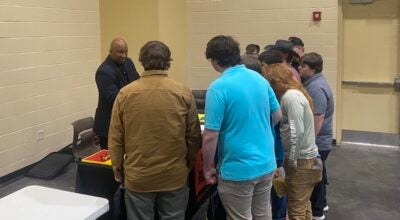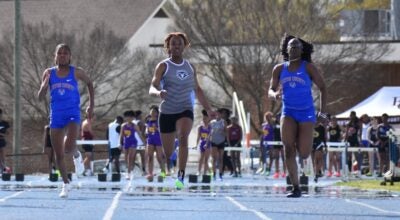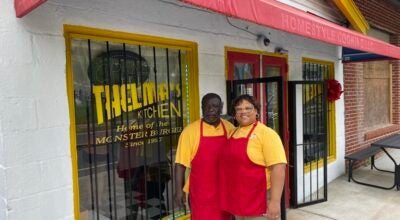Cancer diagnosis at age 22 (community correspondent)
Published 9:51 am Monday, October 12, 2015
Why support the American Cancer Society through Chilton County Relay For Life?
As you well know, our fight against breast cancer doesn’t begin or end in October. We’re making an impact year-round, and there are many reasons people should support us over the scores of other breast cancer fighting organizations.
1. We invest more in breast cancer research than any other cancer, and we’ve played a role in nearly every major breast cancer research breakthrough in recent history:
•Establishing mammography as the standard to find breast cancer early.
•Discovering lifesaving treatments such as Herceptin and Tamoxifen.
•Discovering genes that cause breast cancer.
•Deepening the knowledge of how genetics, body weight, lack of exercise and alcohol use can increase a person’s cancer risk.
•Discovering the benefits of breast-conserving surgery, such as lumpectomy plus radiation for treatment.
•Palliative care, psychosocial care and impairment driven rehabilitation addressing symptoms and late effects.
2. As of Aug. 1, the American Cancer Society is supporting 198 grants with $83.5 million to find the answers that will help save lives from breast cancer.
3. Unlike some organizations that support only breast cancer research, we also fund research to find cures for all types of cancer because we know that discoveries in one area could also help find answers in another.
4. Our research program has a proven track record. Since 1946, we’ve invested more than $4.3 billion in cancer research. Of the researchers chosen for Society funding, 47 were honored with the Nobel Prize.
5. As the largest, private, not-for-profit investor in cancer research, we’ve contributed to a 22-percent decline in overall cancer death rates in the U.S. during the past two decades. That means we’ve helped save more than 1.5 million lives during that time.
6. We know that finding breast cancer at an early stage can increase the chances of treating it successfully, so we provide screening guidelines, education for health care professionals, and engage in efforts to increase public awareness about the importance of regular mammograms. The public and professionals look to us for guidance.
7. We develop nutrition and physical activity guidelines to help people eat healthy and get active. On cancer.org/healthy, individuals can access a number of tools to help live a healthy lifestyle, including a body mass index (BMI) calculator, healthier lifestyle videos, and recipes.
8. We are available around the clock, 365 days a year, at 1-800-ACS-2345, and in communities nationwide we’re helping people by providing:
•Transportation assistance to and from treatment through our Road To Recovery program.
•Free lodging when the treatment facility is away from home through our American Cancer Society Hope Lodge Network and hotel partners program
•The Reach To Recovery emotional support program that connects newly diagnosed breast cancer patients with trained breast cancer survivors.
•Free wigs and assistance with treatment-related physical side effects.
•An online support network, Cancer Survivors Network
9. Making Strides Against Breast Cancer is the largest network of breast cancer awareness events in the nation, uniting nearly 300 communities with a shared determination to finish the fight against breast cancer. In 2014 alone, 1.3 million walkers across the country raised $64 million for the American Cancer Society.
10. The Society’s advocacy affiliate—the American Cancer Society Cancer Action NetworkSM (ACS CAN)—advocates for essential public policies and programs that increase access to breast cancer screenings, outreach and education, follow-up care and treatment for all people. ACS CAN works tirelessly to keep the fight against breast cancer a top priority for our nation’s lawmakers. ACS CAN has successfully lobbied Congress for millions of dollars for the Centers for Disease Control and Prevention National Breast and Cervical Cancer Early Detection Program (NBCCEDP), which helps low-income, uninsured, and underinsured women get access to critical screenings and follow-up treatment. Thanks in part to this work, since 1991 the NBCCEDP has provided over 11.6 million screening exams to more than 4.6 million women, detecting more than 64,718 breast cancers.
ACS CAN is working to ensure that critical provisions of the Affordable Care Act work as intended to improve patient access to quality health care including screening, treatment and follow-up care.
ACS CAN is working to pass the Breast Density and Mammography Reporting Act (S. 370/H.R. 716) that would help empower women and their health care providers to make more informed decisions about breast density and risk, and recommend that women who are found to have dense breast tissue have a follow-up conversation with their health care providers about next steps.
ACS CAN actively supports federal legislation that would increase access to treatment for breast cancer patients and improve the quality of life for breast cancer survivors.
ACS CAN urges Congress to fund critical research that has the potential to make progress in the prevention, treatment, and care of those diagnosed with and living with cancer.
Perhaps the most important and tangible reason for supporting the American Cancer Society and their continued fight against breast cancer is for women like Leah Baker and her precious family.
Leah Baker’s extraordinary journey of survival
“In some ways, 2001 seems like a lifetime ago, but in other ways it seems like it was just yesterday. I was a happily married young woman and a brand new mother. I was 22 years old, young and naive, and certainly not prepared for what I would soon face.
It all began when I noticed a knot in one of my breasts. I didn’t think much about it as I was nursing for the first time and thought it was related to that. So, I decided I would just wait and show my doctor at my six-week checkup.
I put it out of my mind and kept enjoying every minute with my brand new son. One night my arm brushed the side of my breast, and I realized that the knot had become much larger. I still waited until my six-week checkup, though, never imagining it could be anything serious at my young age!
Finally, the day arrived for my checkup. It was just my son and me at the doctor’s office. I never imagined when I got in my car that day what a nightmare I was about to begin! At my appointment, I showed the doctor the knot. He took out a measuring tape and measured it. He said, “Leah, this is very large; how long has it been there?” I told him I noticed it a couple weeks before.
He immediately sent me over to a surgeon. The surgeon did an ultrasound on my breast and told me it was a solid mass, not fluid filled. I said, “Oh OK,” but I was thinking, what in the world does this mean? Looking back, I remember how frightened I was. I was trying to be brave because I had my new precious baby staring up at me with his big, beautiful, blue eyes. I remember thinking, I got this, no big deal. I’m only 22, what could possibly be wrong? The doctor did a biopsy that day before I left, but I convinced myself that they were making a big deal out of nothing!






